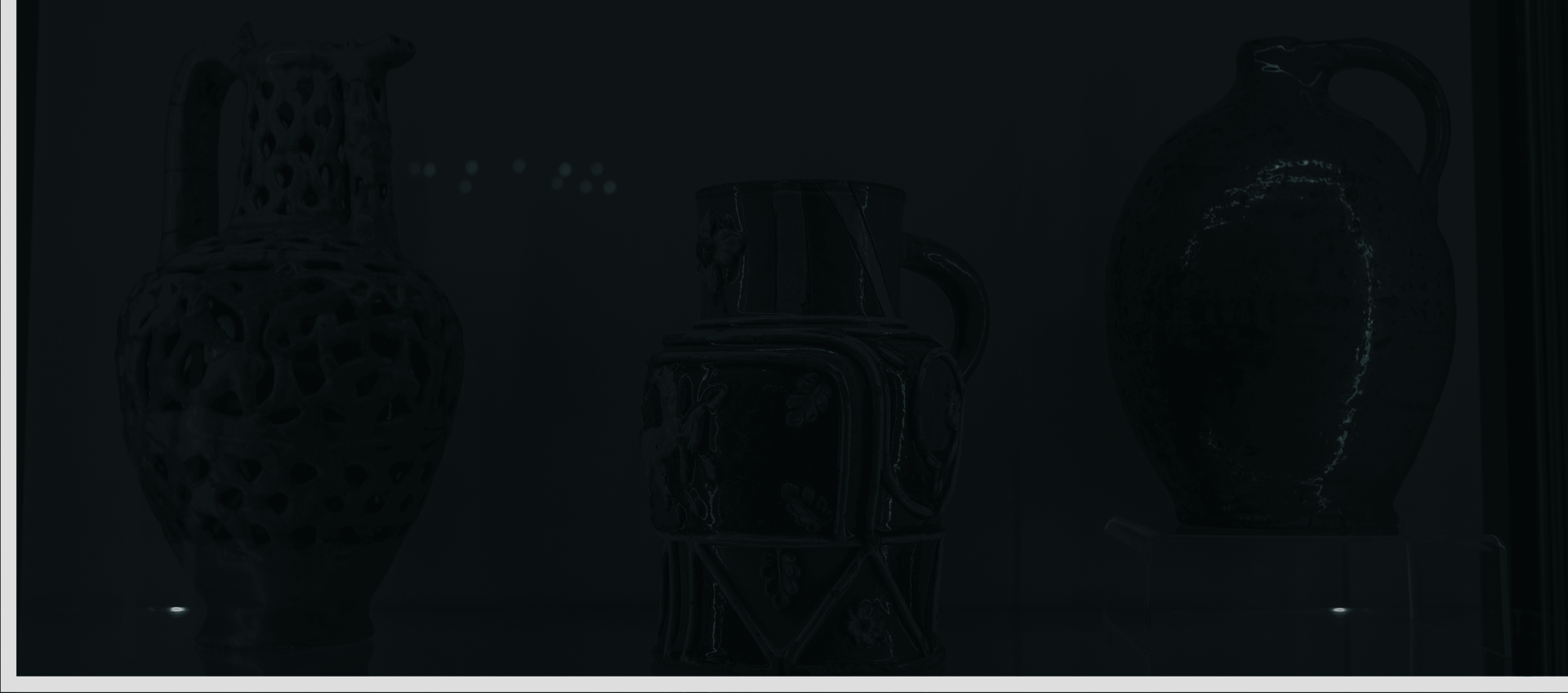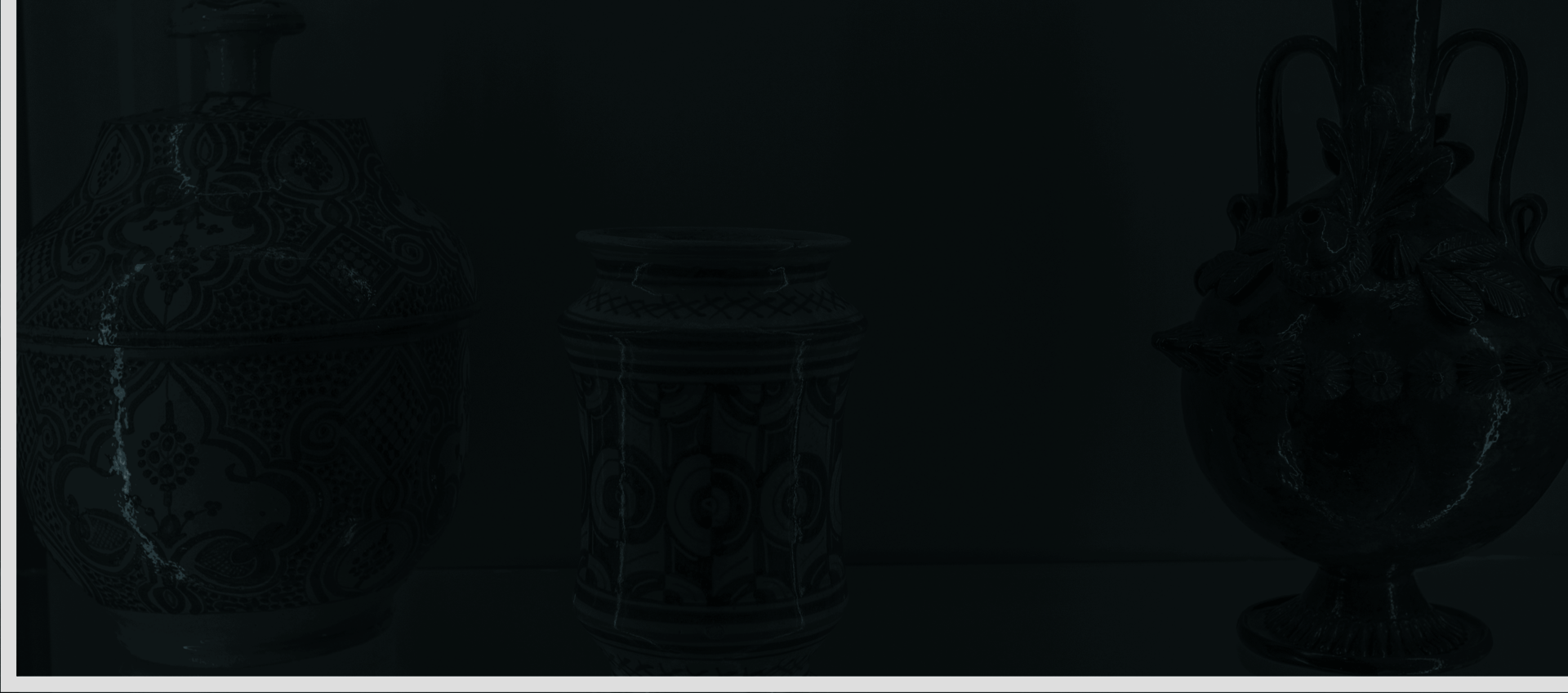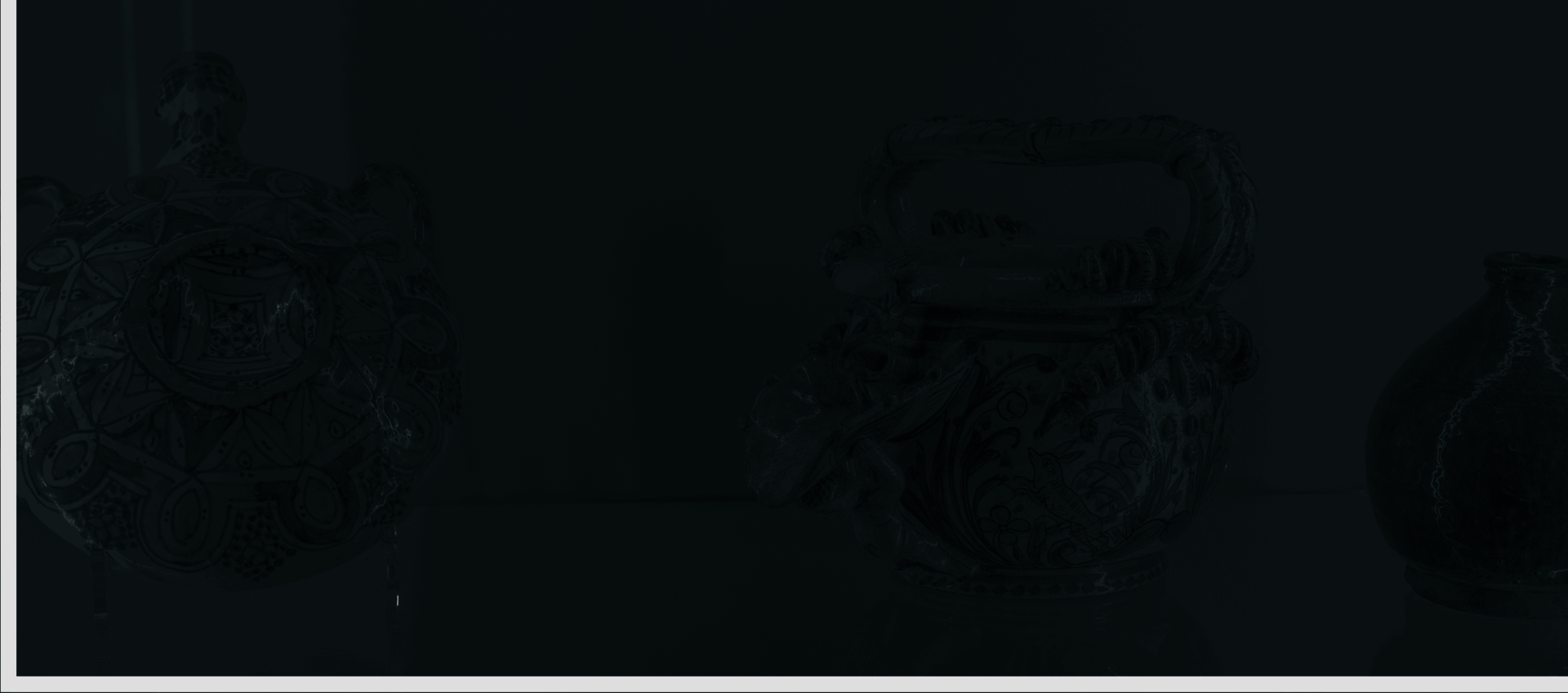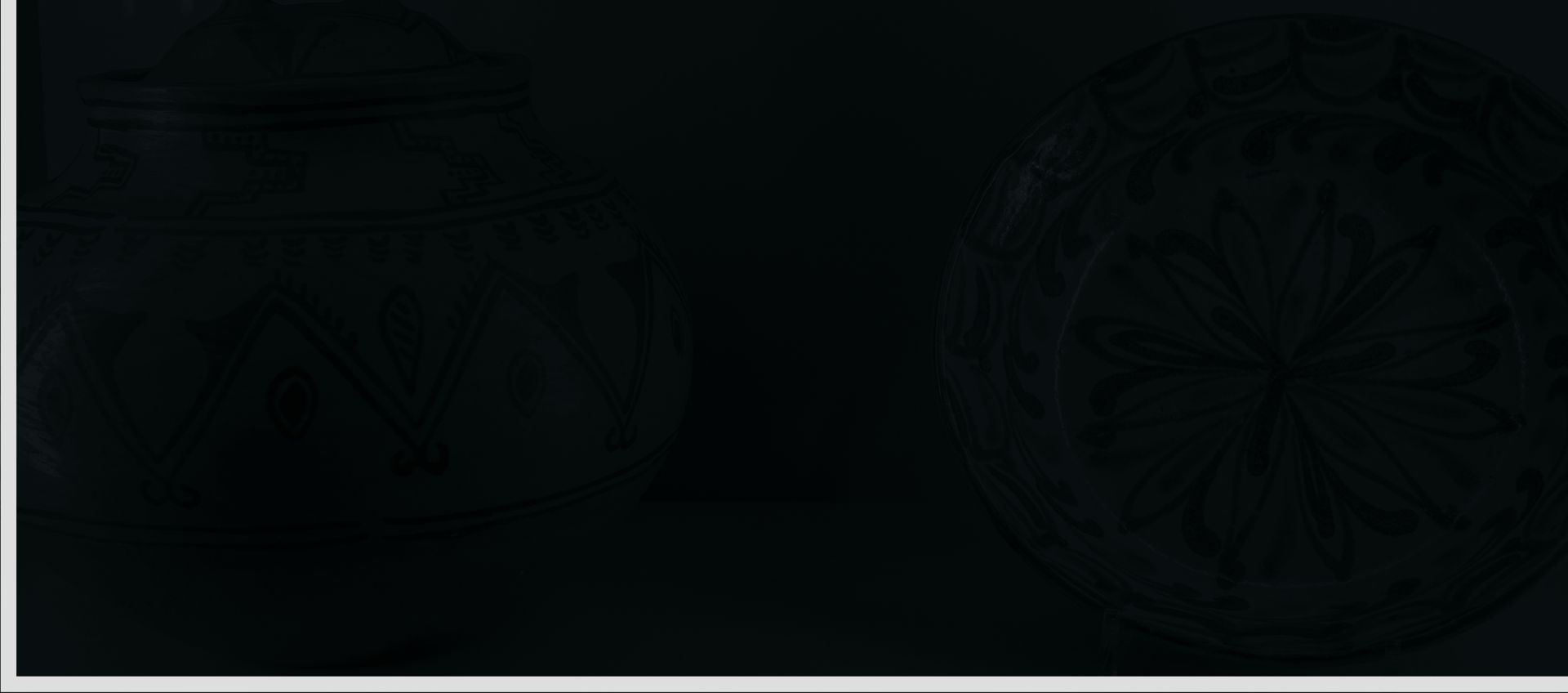STORE & SERVE
Ceramic vessels were one of humankind’s first inventions, as safely storing commodities was and is essential to life—especially foodstuffs needed to survive the winter months in cold climates. Ceramics provide good protection from moisture, air, spoilage, and infestation.
Archaeologists learn a great deal through the study of ceramic sherds and what remains on them. Traces of fat may indicate a dish used for fish or animal products, carbon or nitrogen particles are evidence of contact with fire, and proteins might suggest that grains or legumes were once stored in the pottery.
Sometime before 1907, Eliza Radeke purchased a collection of approximately 1,750 ceramic works from more than 30 countries, all of which were delivered in 92 barrels to her home on Prospect Street in Providence. The president of RISD from 1913 to 1931 and the daughter of Helen Adelia Rowe Metcalf, the co-founder of RISD, Radeke donated part of her ceramics collection to the museum, including works from Morocco, Mexico, and Spain displayed in this case.
Image

Image

Image

Image

